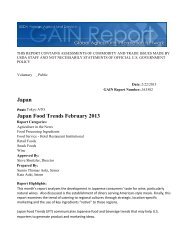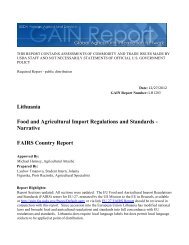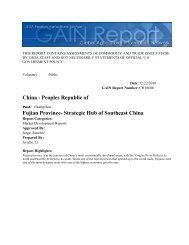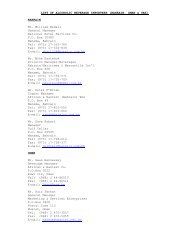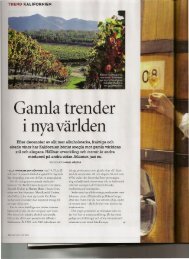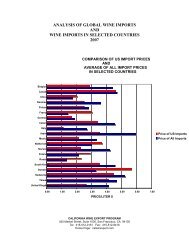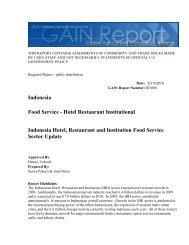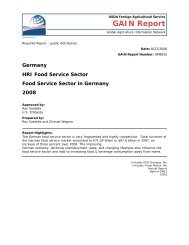Brazil Wine Market Report JBC EMP July 2011 - California Wine ...
Brazil Wine Market Report JBC EMP July 2011 - California Wine ...
Brazil Wine Market Report JBC EMP July 2011 - California Wine ...
Create successful ePaper yourself
Turn your PDF publications into a flip-book with our unique Google optimized e-Paper software.
8<br />
<strong>Brazil</strong>ian <strong>Wine</strong> <strong>Market</strong> <strong>Report</strong><br />
currently supplies much of the wine consumed within the country. The remainder is<br />
split between Chile and Argentina both enjoying trade tariff preferences and the<br />
European Union that subsidizes exports and production.<br />
c) Customs inconsistencies. As noted later in this report there are many border<br />
formalities necessary for the importation of goods. Those formalities are not<br />
consistently administered by the different ports of entry. It is recommended that an<br />
advanced ruling be requested from customs if the importer is not confident as to the<br />
classification, value and tax treatment of the wine.<br />
d) Other potential risks include current issues with contraband wine products that cross<br />
the border illegally, especially along the Southern border with Paraguay. These<br />
products reach the market at an unfair advantage; with costs lower than other<br />
importers can match.<br />
e) Potential new legislation to control alcohol abuse is also being considered.<br />
Geography and Domestic <strong>Wine</strong> Production<br />
Climate and Topography<br />
It is in the southern region of <strong>Brazil</strong>, with high temperatures during the day and cool low<br />
temperatures at night that is responsible for the quality and wide variety of grapes.<br />
Primarily, grape and wine production are centered in the Serra Gaucho Mountains located<br />
parallel 29° with average temperatures between 12°C in the winter months and 22°C during<br />
the summer. These mountains include the<br />
sub-region of Vale dos Vinhedos, <strong>Brazil</strong>’s first<br />
Geographical Indication. Production marches<br />
down from the mountains to the southern<br />
valleys. The southernmost state of Rio<br />
Grande do Sul produces over 55 percent of<br />
national grape production. Other well known<br />
wine producing regions of <strong>Brazil</strong> include the<br />
states of São Paulo, Paraná, Santa Catarina,<br />
Pernambuco and newly discovered Minas<br />
Gerais.<br />
<strong>Brazil</strong>ian <strong>Wine</strong>ry Miolo, photo by Lethaargic/Flickr<br />
Vale do São Francisco<br />
The tropical state of Vale do São Francisco<br />
resides at 9° south latitude and with its dry<br />
climate makes it the only wine producing region<br />
requiring irrigation. The alkaline soil along with<br />
the climate conditions produces low yield<br />
grapes with high sugar levels. Producers in this<br />
region can harvest grapes two times a year.



